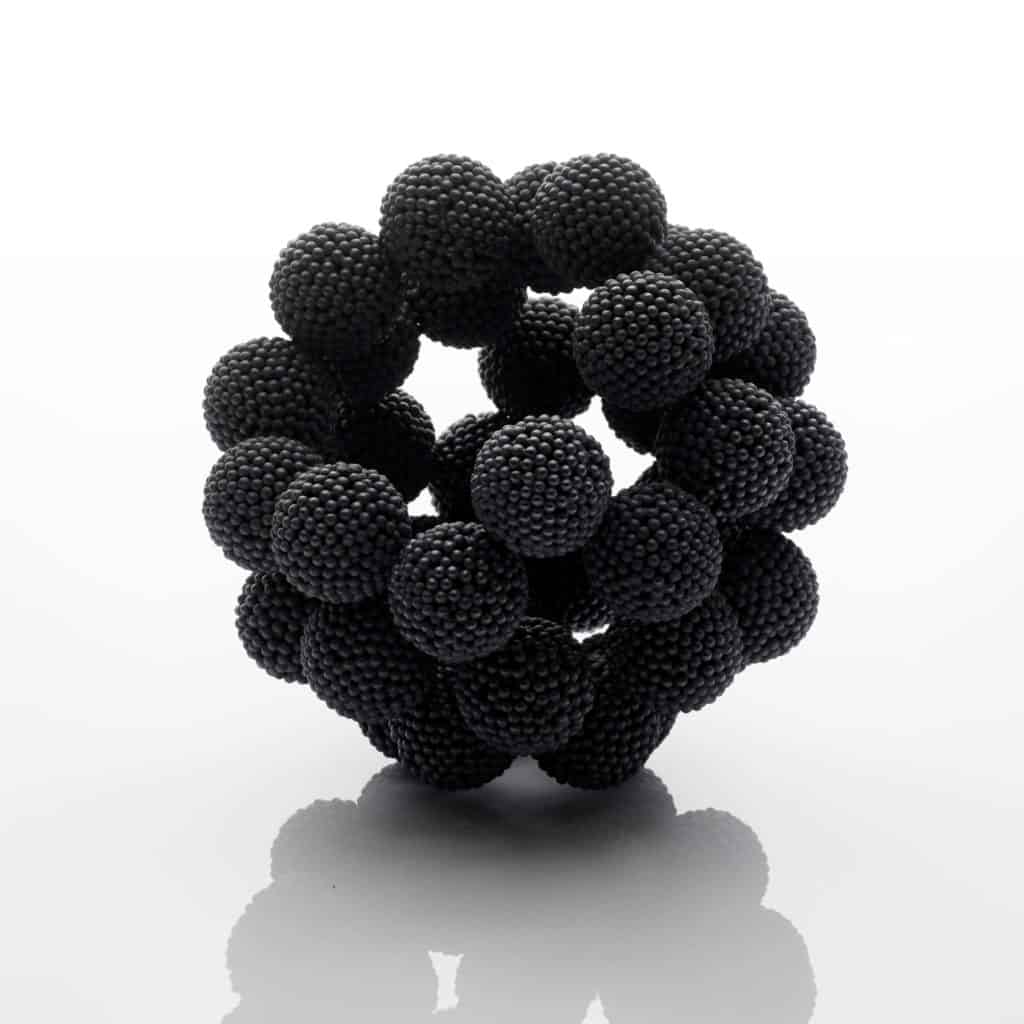More about Fractal Piece, 2007
Granulation is an ornamental technique in goldsmiths’ art in which tiny metal spheres, also called granules, are heat-fused to a metal surface without the use of solder, generally in an ornamental or figurative arrangement. It is considered to be one of the most important and magical techniques in the history of goldsmithing. The technique originated in the 3rd millennium BC in the Middle East, but reached its technical and artistic peak in Etruria, between the 7th and 4th century BC.
From the moment of its conception to the present day, granulation was almost entirely used for decorative purposes, mainly in gold and on small objects, most often on jewellery.
The main idea behind the granulated work of David Huycke is that the granules are not solely used as decorative means, instead the little spheres form structure and artistic impression at the same time. From this perspective the granule - the original ornament - loses its primary, decorative function of pure visual pleasure and shifts into the essential building material of the object. Granulation becomes the texture, the structure as well as the architectural support of the work.
In jewellery there are only few pieces known where granules build the piece. In the world of objects/ silversmithing this concept is totally new.
Unlike traditional soldering where the metallic connection between the different elements is usually achieved by adding solder with a lower melting point, the connection in granulation is made through what is called ‘reaction soldering’. Instead of solder, copper is used as a binding agent, using the principle that copper is the diffusion agent and can lower the melting point of an alloy with silver or gold. Reaction soldering is a way of soldering which was used frequently in antiquity, and not just for granulation. It is a method that offers the possibility to create metallic connections so delicate and pure which are hardly possible with traditional soldering.
The granules are produced through melting numerous little pieces of metal, using the principle of cohesion and surface tension (a little molten piece of metal automatically becomes a little sphere). Usually granules are very small in size, in the best Etruscan pieces they start from 0.1mm diameter going up. In the work of David Huycke the granules are much bigger since they need to build the object. In his work the most frequently used size of granule is 3.2mm diameter and weighs 0.182 gram. Granules are produced in self-developed ceramic tiles. Little identical pieces of silver are placed in the tiles, which are then heated in an oven, melted to form tiny spheres.
When the granules are made they are first tumble-polished and subsequently electrolytic copper-plated, since copper is used as the binding agent in reaction soldering/ granulation. Finally the copper-plated granules are heat fused with each other to build the object. This is achieved with a large flame in a fireproof concrete mould. Afterwards the copper (which becomes a copper-oxide through heating) is mostly dissolved in the pickle. To finish, the piece is patinated black.
In Huycke's work, different structures are applied to culminate the tension between order and chaos where on the edge of the bowl the orderly outside goes over in a chaotic inside. This object is build up from different layers of granules whereby the surface is more a three dimensional volume than a three dimensional surface.


